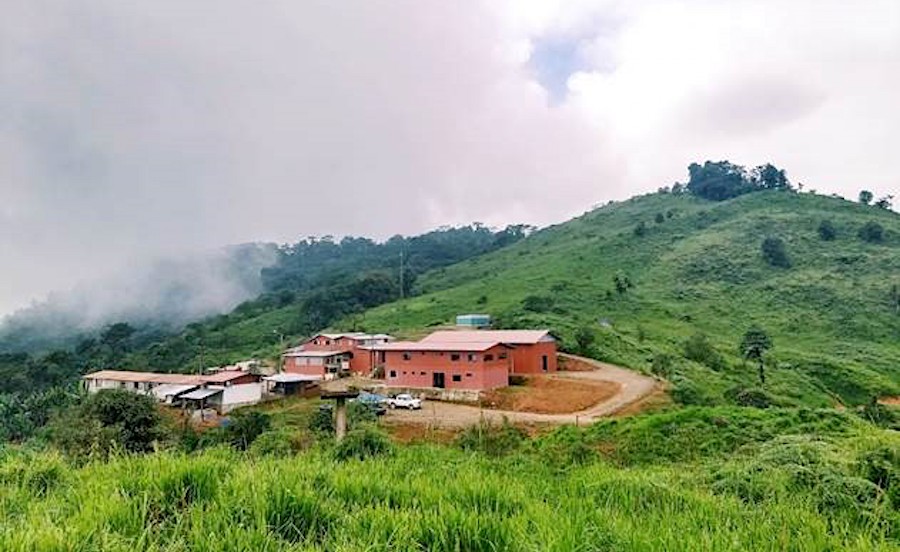
An updated preliminary economic assessment (PEA) for Lumina Gold‘s Cangrejos gold-copper project in southern Ecuador has added nine years to the mine life and improved economics while increasing the initial capex to $1 billion from $831 million.
The extended mine life for the open pit project, in Ecuador’s El Oro province, comes from increased resources at Cangrejos and a maiden resource compiled late last year at the Gran Bestia deposit located 1 km away.
The economics were boosted by the addition of resources as well as an improved process flow sheet.
With average annual production of 366,000 oz. gold and 46 million lb. copper, the project’s post-tax net present value is now estimated at $1.6 billion at a discount rate of 5%, with an internal rate of return (IRR) of 16.2%.
That compares with a mine life of 16 years and annual production of 373,000 oz. gold and 43 million lb. copper in the previous PEA, completed in mid-2018. That study projected an NPV of $920 million and an IRR of 15%.
In a release, Lumina president and CEO Marshall Koval said he was pleased by the increase in the NPV by over $600 million, as well as the project’s ability to sustain high production of over 360,000 oz. gold per year over 25 years.
The extended mine life for the open pit project, in Ecuador’s El Oro province, comes from increased resources at Cangrejos and a maiden resource compiled late last year at the Gran Bestia deposit
“Cangrejos is an exceptional global gold deposit and one of the few of this scale that is 100% controlled by an independent developer,” he said.
“Ecuador has made substantial progress in its mining sector with the successful commissioning of Fruta del Norte and Mirador. Now the country will turn their focus to the next generation of development projects.”
Cash operating costs are projected at $545 per oz. with all-in sustaining costs of $604 per oz., net of byproduct credits.
The PEA used a gold price of $1,400 per oz. (up from $1,300 per oz.) and a copper price of $2.75 per lb. (down from $3.25 per lb.) Gold is expected to account for 79% of life-of mine revenues, with copper contributing 19.4%.
The proposed processing plant for Cangrejos is a conventional copper-gold flotation concentrator and CIL (carbon-in-leach) circuit that will handle 40,000 t/d for the first five years.
Starting in year six, the capacity would be doubled for the remainder of the mine life to 80,000 t/d. The plant is designed to produce a gold and silver doré, a copper-gold flotation concentrate that will account for the majority of revenue, and a molybdenum concentrate.
The addition of a CIL plant, tailings filtration and tailings/ore conveying costs, all pushed the initial project capex higher by $169 million to $1 billion in the updated PEA.
The Congrejos deposit contains an indicated resource of 469.7 million tonnes grading 0.59 g/t gold, 0.12% copper, 0.7 g/t silver and 22.4 ppm molybdenum (or 0.77 g/t gold equivalent). Inferred resources add 254.9 million tonnes grading 0.43 g/t gold, 0.08% copper, 0.7 g/t silver and 14.8 ppm molybdenum (or 0.55 g/t gold equivalent).
Gran Bestia contains an indicated resource of 101.1 million tonnes grading 0.46 g/t gold, 0.08% copper, 0.6 g/t silver and 15.4 ppm moly (or 0.58 g/t gold equivalent). Inferred resources add 245.5 million tonnes grading 0.4 g/t gold, 0.07% copper, 0.6 g/t silver and 11.3 ppm moly (or 0.5 g/t gold equivalent).
Both resource estimates use a 0.3 g/t cutoff grade and resources contain a mixture of saprolite, partially oxidized and fresh rock.
Lumina’s stock was trading up 2.6% at Tuesday’s close on the TSXV. The company has a C$261 million market capitalization.
(This article first appeared in the Canadian Mining Journal)